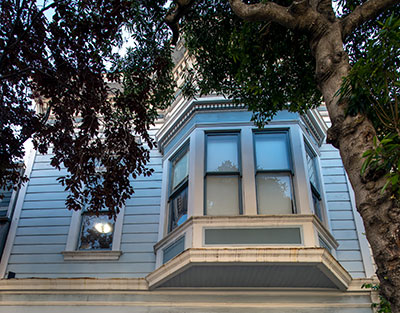National Register of Historic Places in San Francisco
Timothy L. Pflueger House
1015 Guerrero Street
Mission
Built 1887
Timothy L. Pflueger moved here as a child and remained here until his death. In the absence of any extant architectural studio or office, the house is the best property associated with Pflueger’s productive life.
At least twenty-six of Pflueger’s major buildings are extant throughout California, seventeen of them in San Francisco. A majority have been repurposed rather than demolished, a testimony to the quality of Pflueger’s design. Twenty have been designated historic.
Though he entered the profession in an era still dominated by the Beaux-Arts aesthetic, Pflueger embraced a modernist approach that incorporated influences from Chinese, Persian, Moorish, Mesoamerican and other traditions. He was among those who created what was later called Mayan Deco.
Pflueger embraced contemporary building materials, including aluminum, Lucite and sheet metal, to make his buildings seem more richly appointed than constrained Depression budgets would otherwise allow.
Long known as a supporter of the fine arts, Pflueger often collaborated with well-known sculptors, muralists, lighting designers, and other artisans and craftspeople, including Diego Rivera and Ralph Stackpole.
Source: The National Register nomination.

I was surprised to see that the designer of such glamorous buildings as the Castro Theater, the Alhambra Theatre, and the Paramount Theatre resided in such an unassuming house for his entire career.
The building was a single-family dwelling when Pflueger lived here. It was divided into two flats in the 1980s.

